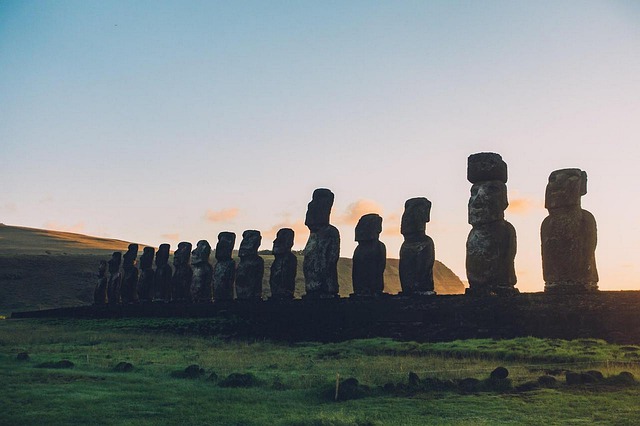For many decades, scientists have tried to uncover the secret of the construction of giant moai idols on one of the most mysterious islands – Easter. Researchers carefully studied the statues themselves and the area around them, trying to find an answer to the question of how the moai were transported, as well as how they ended up on their heads with multi-ton red Pukao stone hats.
The application of the laws of physics, methods of archeology, and computer 3D modeling allowed, finally, to find a solution to this phenomenon.
The most mysterious island
Easter Island is fraught with many secrets and mysteries. For many years, scientists have been trying, one by one, to discover its secrets. A unique civilization that existed on the island about two millennia ago left impressive moai figures to descendants. According to researchers, giant idols are deified figures of ancestors and relatives of the ancient Polynesians.
According to studies, the civilization itself practically ceased to exist long before the moment when a man’s foot set foot on the island. There were two versions of why this could happen: a murderous war that exterminated the tribes on the island and the depletion of the island’s natural resources.
However, the study of different types of spearheads, “mata’a,” made it possible to conclude that they were not a murder weapon but could only injure the enemy. Therefore, the assumption of the disappearance of civilization as a result of the war has not been confirmed.
Instead, there was a depletion of resources and then the arrival of Europeans on the island with its actual occupation by slave traders. Simultaneously, the moai culture had almost completely disappeared and was replaced by the more aggressive bird-man culture. Thus, somewhere in the middle of the 19th century, the remnants of an ancient civilization were destroyed.
The destruction of the culture itself and the language speakers became the main difficulty in unraveling the secret of stone idols. Scientists were extremely worried about the appearance of Pukao on idols, these fabulous hats weighing up to 15 tons each.
The study of the gigantic sculptures showed that the torso and the hat contain different volcanic rocks located at a considerable distance from each other in different parts of the island. American anthropologists have spent many years looking for clues and finally answered the burning question about the mechanism of building moai idols.
The researchers considered the condition of the surface and the presence of scratches and damage on the idols and their hats and all the artifacts found, and the state of the island’s soil.
Ancient moai scholars
As a result of moral calculations, it was concluded that the only possible way to put the hat on the idol’s head. At the same time, the issue was resolved with small forces: colossal deforestation and the participation of many people in construction were not required.
The statues themselves turned out to be made so that they could straighten up on their own if there were not too much tilt. This made it possible to move the statues, slightly shifting them alternately in different directions. In this way, people today move large bulky objects in small steps from side to side. The idols slowly but surely moved over considerable distances.
But the hats did not get to the idols completely ready. From the quarry where Pukao blanks were made, they were rolled, as evidenced by scratches on the surface. Already near the idol for which the hat was intended, the blank was finalized and, using a straightforward method, put on the stone owner.
The natives of Easter Island built a relatively gentle slide from sand and rubble, wrapped a rope around the Pukao, and tied it to an idol. Pulling out the free end, they lifted the hat to a hill, where it was turned on its side and placed on the monument’s head.
This version has found a lot of evidence: remnants of slides near some of the lying idols, a recess in the Pukao, with which the hat is held on the head. Additional confirmation was that all the idols originally stood at a slight slope to the ground. This slope made it possible to put on the hat on the monument and then straighten it simply by removing some stones from the back of the pedestal.
This method made it possible to do without the participation of a large number of people. To set up the giants, the ancient Polynesians used their sharp minds, the laws of physics, a handful of people, and a small number of natural resources. And they left a memory of themselves for centuries.
